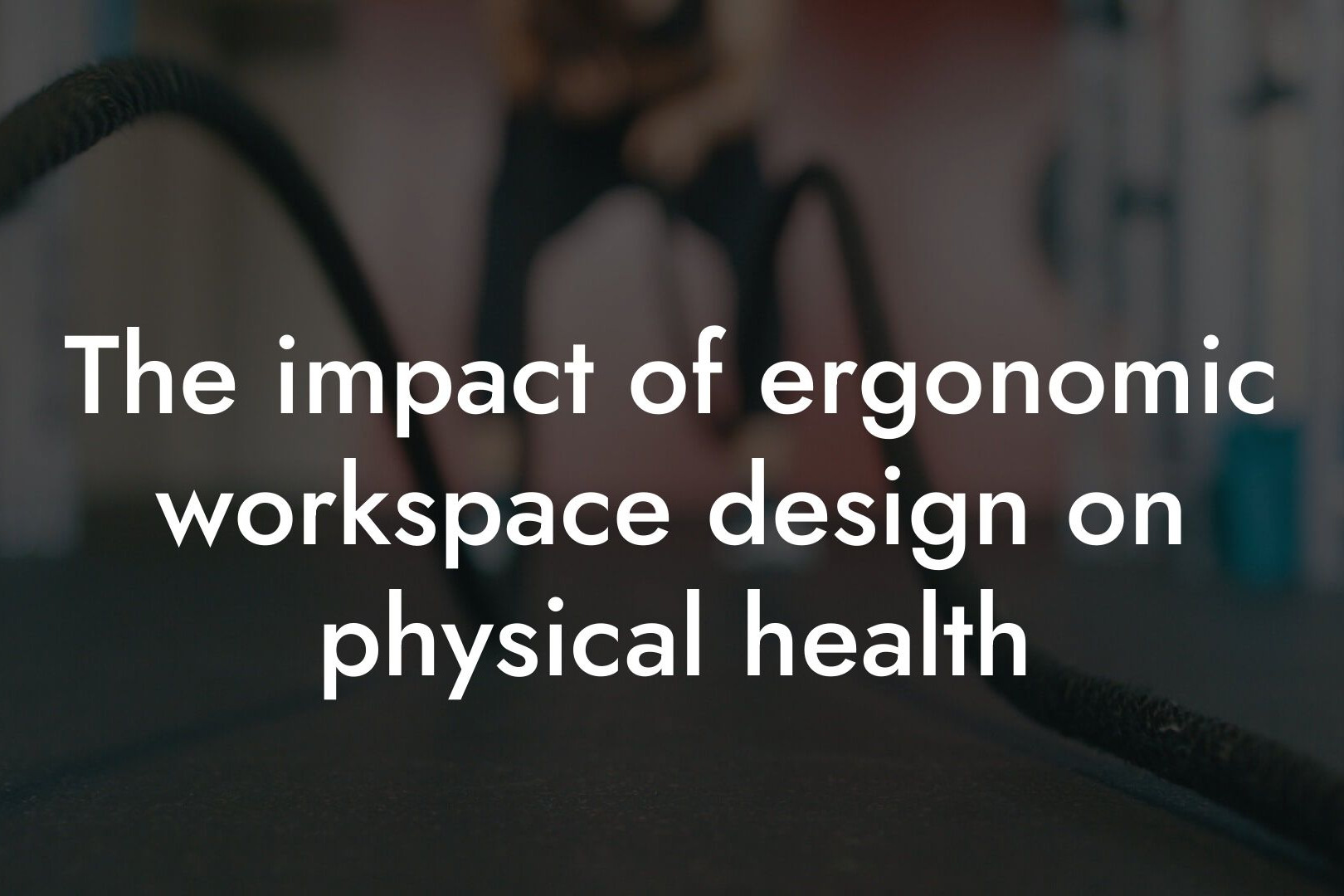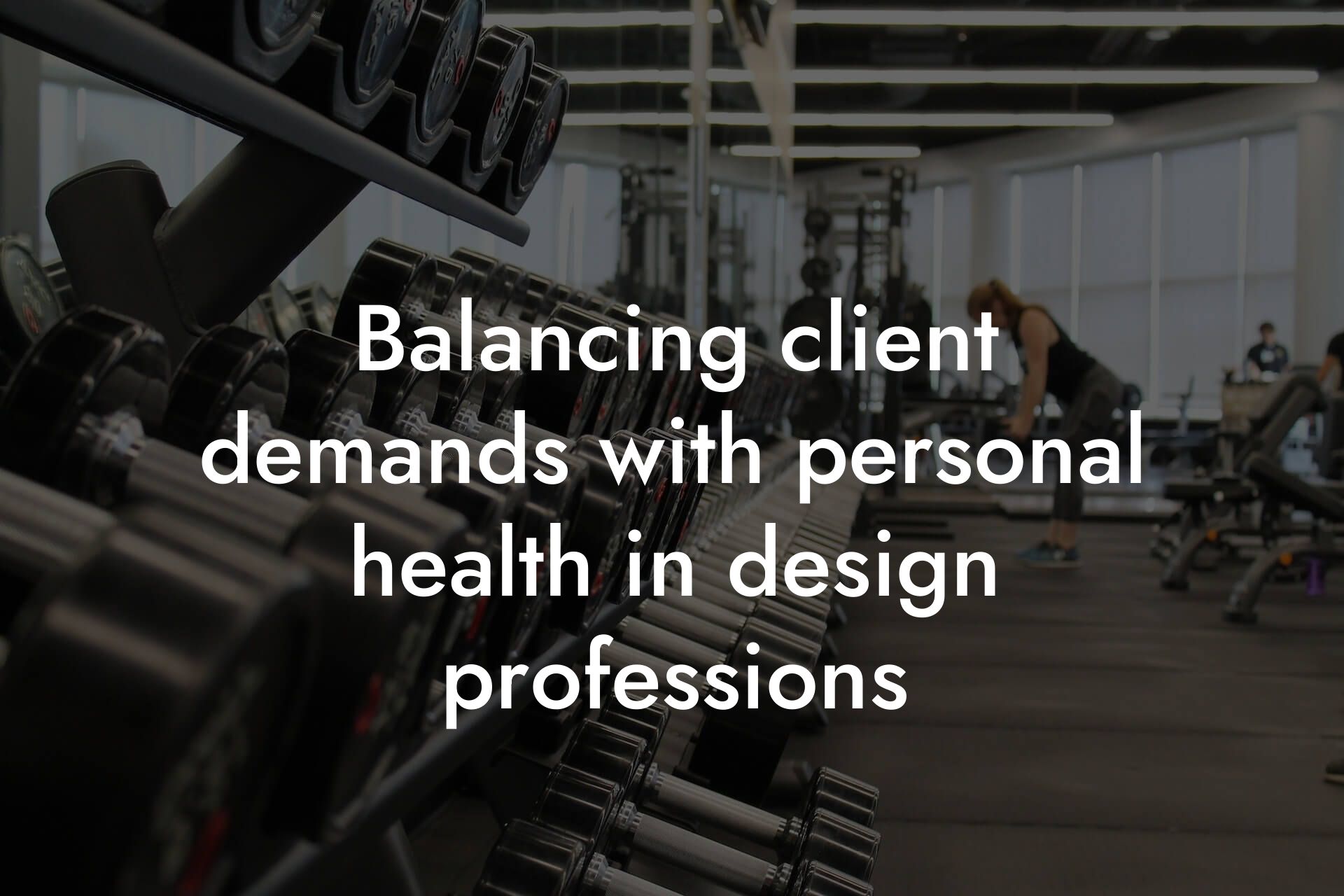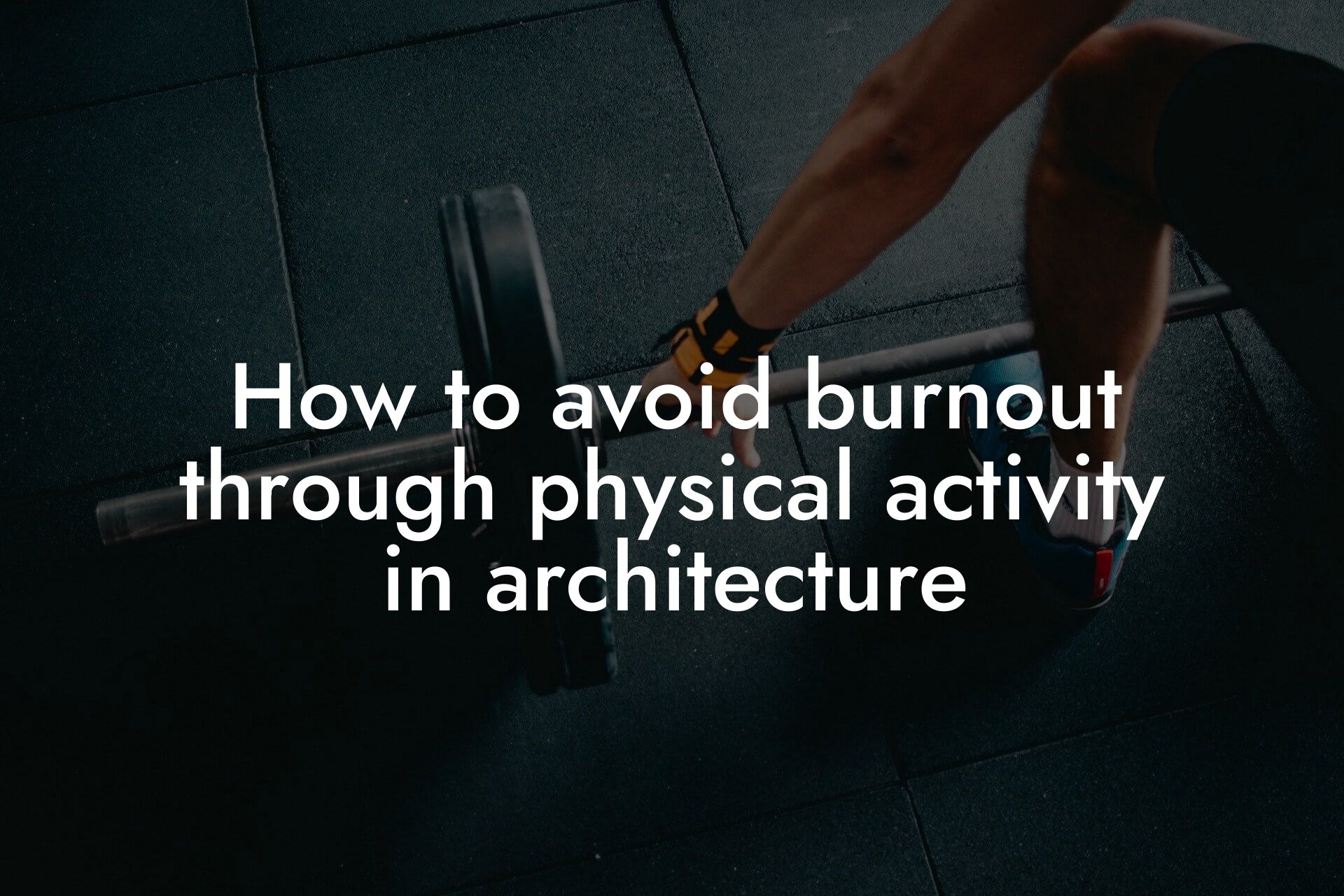The Intersection of Physical Fitness and Professional Success
As high-earning professionals, you understand the importance of making a lasting impression in your field. Whether you're an architect, engineer, or designer, your physical appearance and confidence can greatly impact your professional success. At Tano Performance Group, we believe that physical fitness is a crucial aspect of achieving success in architectural presentations. In this article, we'll explore the importance of physical fitness in architectural presentations and how it can take your career to the next level.
Table of Contents
- The Intersection of Physical Fitness and Professional Success
- What is Physical Fitness, and Why is it Important?
- The Benefits of Physical Fitness for Architects
- The Impact of Physical Fitness on Architectural Presentations
- The Role of Body Composition in Architectural Presentations
- How to Incorporate Physical Fitness into Your Busy Schedule
- Final Thoughts
- Frequently Asked Questions
What is Physical Fitness, and Why is it Important?
Physical fitness refers to the ability of the body to function efficiently and effectively in daily activities. It encompasses various aspects, including cardiovascular health, muscular strength and endurance, flexibility, and body composition. In the context of architectural presentations, physical fitness is essential for maintaining the energy, focus, and confidence needed to deliver a compelling and persuasive pitch.
The Benefits of Physical Fitness for Architects
Regular exercise and physical fitness can have a significant impact on an architect's performance and overall well-being. Some of the benefits include:
• Improved cognitive function and focus: Exercise has been shown to improve cognitive function, memory, and concentration, all of which are essential for creating innovative and effective designs.
• Enhanced creativity: Physical fitness can increase creativity, allowing architects to think outside the box and come up with innovative solutions to complex design problems.
• Better time management: Regular exercise can help architects manage their time more efficiently, allowing them to meet deadlines and deliver projects on time.
• Increased confidence: Physical fitness can boost confidence, enabling architects to present their designs with conviction and authority.
The Impact of Physical Fitness on Architectural Presentations
A well-planned and executed presentation is crucial for winning clients and securing projects. Physical fitness can play a significant role in making a positive impression and delivering a compelling pitch. Here are some ways physical fitness can impact architectural presentations:
• Body language: A fit and healthy body language can convey confidence, authority, and professionalism, making a lasting impression on clients and stakeholders.
• Energy and enthusiasm: Physical fitness can provide the energy and enthusiasm needed to deliver a engaging and persuasive presentation.
• Focus and concentration: Regular exercise can improve focus and concentration, allowing architects to stay on track and deliver a clear and concise message.
The Role of Body Composition in Architectural Presentations
Body composition, which refers to the percentage of body fat, muscle mass, and bone density, can play a significant role in architectural presentations. A healthy body composition can convey a sense of professionalism and confidence, while an unhealthy body composition can detract from an architect's credibility. At Tano Performance Group, we use DEXA scans to provide a comprehensive body assessment, helping architects understand their body composition and make informed decisions about their health and fitness.
How to Incorporate Physical Fitness into Your Busy Schedule
As a busy professional, it can be challenging to find time for exercise and physical fitness. However, incorporating physical fitness into your daily routine can have a significant impact on your overall health and well-being. Here are some tips for incorporating physical fitness into your busy schedule:
• Start small: Begin with short, 10-15 minute workouts and gradually increase the duration and intensity as you become more comfortable.
• Find activities you enjoy: Engage in physical activities that you enjoy, such as walking, jogging, cycling, or swimming, to make exercise feel less like a chore.
• Schedule it in: Treat exercise as a non-negotiable part of your daily routine, just like brushing your teeth or taking a shower.
In conclusion, physical fitness is a critical aspect of achieving success in architectural presentations. By incorporating regular exercise and physical fitness into your daily routine, you can improve your cognitive function, creativity, time management, and confidence, ultimately leading to more effective and persuasive presentations. At Tano Performance Group, we're committed to helping high-earning professionals like you achieve their fitness goals and take their careers to the next level. Contact us today to learn more about our DEXA scan services and how we can help you achieve your goals.
Final Thoughts
Remember, physical fitness is not just about looking good; it's about feeling good, too. By prioritizing your physical health and fitness, you can improve your overall well-being, increase your confidence, and deliver presentations that truly impress. So, take the first step today and make physical fitness a priority in your life. Your career – and your body – will thank you.
Frequently Asked Questions
What is the connection between physical fitness and architectural presentations?
Physical fitness plays a significant role in architectural presentations as it enhances confidence, energy levels, and overall performance. When architects are physically fit, they are more likely to deliver engaging and convincing presentations, which can make a substantial difference in winning clients and projects.
How does physical fitness impact an architect's confidence?
Regular exercise and a healthy diet can boost an architect's self-esteem and confidence, allowing them to feel more comfortable and assertive when presenting their designs. This confidence can translate into a more persuasive and effective presentation.
What are some common physical fitness challenges faced by architects?
Architects often lead sedentary lifestyles, spending long hours sitting at their desks or in front of computers. This can lead to weight gain, back pain, and other health issues. Additionally, architects may struggle to find time for exercise due to demanding project deadlines and long work hours.
How can architects overcome these physical fitness challenges?
Architects can start by incorporating small amounts of physical activity into their daily routine, such as taking short walks during breaks or using a standing desk. They can also prioritize exercise by scheduling it into their daily planner or finding a workout buddy to hold them accountable.
What role does nutrition play in an architect's physical fitness?
Nutrition is a critical component of physical fitness. A balanced diet that includes plenty of fruits, vegetables, whole grains, and lean protein can help architects maintain energy levels, support weight management, and reduce the risk of chronic diseases.
How can architects make healthy nutrition choices with a busy schedule?
Architects can prep healthy meals in advance, keep nutritious snacks on hand, and opt for meal delivery services or healthy take-out options. They can also prioritize breakfast, which can help jumpstart their metabolism and provide energy for the day.
What are some exercises that can help improve an architect's posture?
Exercises that strengthen the core, such as planks and crunches, can help improve an architect's posture. Additionally, stretching exercises that target the neck, shoulders, and back can help reduce tension and improve overall posture.
How can physical fitness improve an architect's mental health?
Regular exercise has been shown to reduce symptoms of anxiety and depression, improve mood, and enhance cognitive function. Physical fitness can also provide a healthy distraction from the stresses of architectural work and help architects develop a more positive body image.
What are some common mistakes architects make when it comes to physical fitness?
Some common mistakes architects make include neglecting to prioritize exercise, setting unrealistic fitness goals, and failing to listen to their bodies and take rest days when needed. It's essential for architects to approach physical fitness with a balanced and sustainable mindset.
How can physical fitness improve an architect's creativity?
Exercise has been shown to improve cognitive function, boost creativity, and enhance problem-solving skills. Physical fitness can also provide a fresh perspective and help architects approach design challenges with a clear and focused mind.
What are some ways architects can incorporate physical fitness into their daily routine?
Architects can incorporate physical fitness into their daily routine by taking the stairs instead of the elevator, going for a walk during lunch breaks, or doing a few jumping jacks during commercial breaks while watching TV. Every bit counts, and small changes can add up over time.
How can physical fitness improve an architect's communication skills?
Physical fitness can improve an architect's communication skills by boosting confidence, enhancing energy levels, and providing a sense of calm and focus. This can help architects articulate their designs more effectively and connect with clients on a deeper level.
What are some physical fitness tips for architects who are just getting started?
Architects who are new to physical fitness should start slowly, set realistic goals, and focus on progress rather than perfection. It's also essential to find a workout buddy or accountability partner to help stay motivated and on track.
How can physical fitness improve an architect's time management skills?
Physical fitness can improve an architect's time management skills by teaching them to prioritize tasks, manage their schedule, and make the most of their time. This can translate into more efficient project management and a better work-life balance.
What are some common physical fitness myths that architects should be aware of?
Some common physical fitness myths include the idea that exercise has to be intense to be effective, that cardio is the only way to lose weight, or that exercise has to be time-consuming. Architects should be aware of these myths and focus on finding a physical fitness routine that works for them and their lifestyle.
How can physical fitness improve an architect's overall well-being?
Physical fitness can improve an architect's overall well-being by reducing stress, improving mood, and enhancing sleep quality. It can also increase energy levels, boost self-esteem, and provide a sense of accomplishment and pride.
What are some physical fitness resources that architects can utilize?
Architects can utilize online workout platforms, fitness apps, and personal training services to help them achieve their physical fitness goals. They can also join fitness communities or find workout buddies to provide support and motivation.
How can physical fitness improve an architect's professional reputation?
Physical fitness can improve an architect's professional reputation by projecting confidence, energy, and a sense of wellness. This can help architects establish trust with clients, build stronger relationships, and differentiate themselves from competitors.
What are some physical fitness challenges that architects can participate in?
Architects can participate in fitness challenges such as marathons, cycling events, or charity walks. They can also create their own challenges, such as taking a certain number of steps per day or completing a set number of workouts per week.
How can physical fitness improve an architect's work-life balance?
Physical fitness can improve an architect's work-life balance by providing a healthy distraction from work, reducing stress, and increasing energy levels. This can help architects be more present and focused in their personal and professional lives.
What are some physical fitness tips for architects who have limited mobility?
Architects with limited mobility can focus on chair-based exercises, yoga, or Pilates. They can also work with a personal trainer to develop a customized exercise plan that meets their needs and abilities.
How can physical fitness improve an architect's overall job satisfaction?
Physical fitness can improve an architect's overall job satisfaction by reducing stress, increasing energy levels, and providing a sense of accomplishment. This can help architects feel more engaged, motivated, and fulfilled in their work.
Here are some related articles you might love...
- The impact of ergonomic workspace design on physical health
- Balancing client demands with personal health in design professions
- How to avoid burnout through physical activity in architecture
- How DEXA scans can benefit architects and designers
- Fitness strategies for balancing design work and physical health
- Nutrition for maintaining creativity and energy in design work
- The connection between body composition and creative output
- How architects can stay fit during long design sessions
- How to stay active during the design and build phases
Zak Faulkner
Zak Faulkner is a leading authority in the realm of physical health and body composition analysis, with over 15 years of experience helping professionals optimise their fitness and well-being. As one the experts behind Tano Performance Group, Zak has dedicated his career to providing in-depth, science-backed insights that empower clients to elevate their physical performance and overall health.
With extensive knowledge of DEXA technology, Zak specializes in delivering comprehensive body assessments that offer precise data on body fat, muscle mass, bone density, and overall physique. His expertise enables individuals to make informed decisions and achieve their fitness goals with accuracy and confidence. Zak’s approach is rooted in a deep understanding of human physiology, combined with a passion for helping clients unlock their full potential through personalised strategies.
Over the years, Zak has earned a reputation for his commitment to excellence, precision, and client-focused service. His guidance is trusted by top professionals who demand the best when it comes to their health. Whether advising on fitness programs, nutritional strategies, or long-term wellness plans, Zak Faulkner’s insights are a valuable resource for anyone serious about taking their health and fitness to the next level.
At Tano Performance Group, Zak continues to lead our Content Team revolutionising how professionals approach their physical health, offering unparalleled expertise that drives real results.




